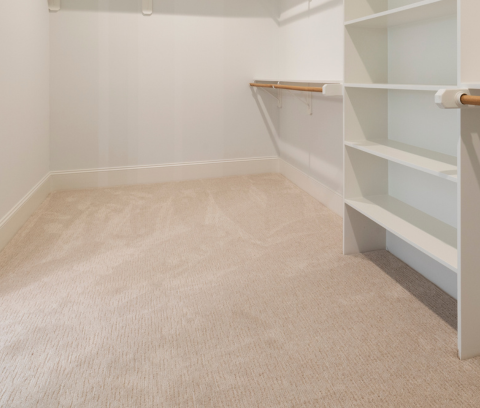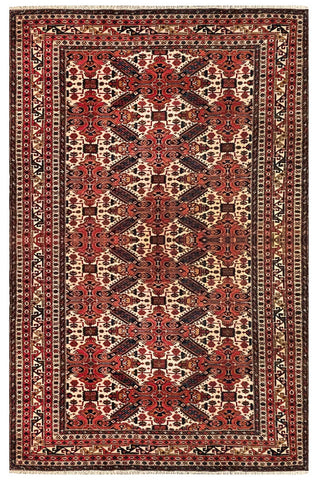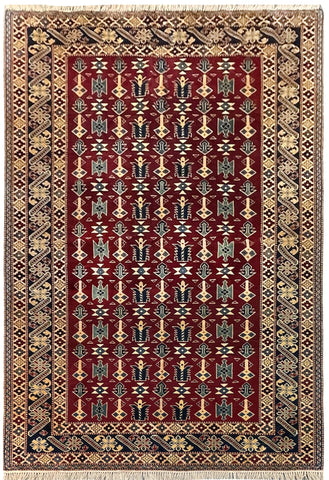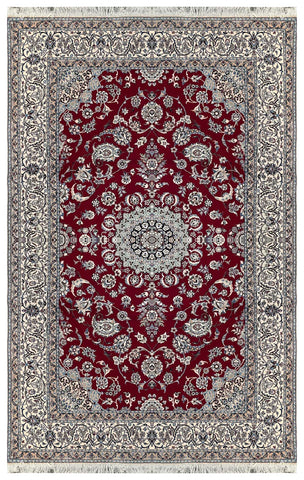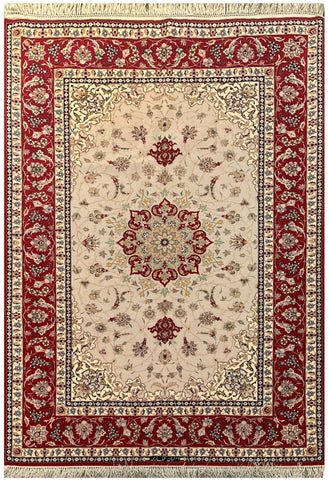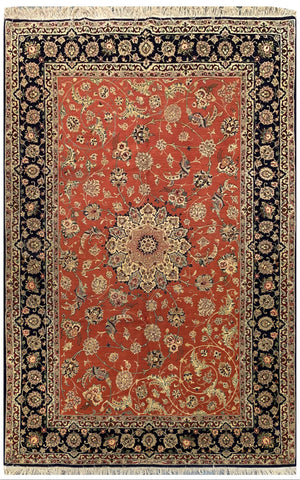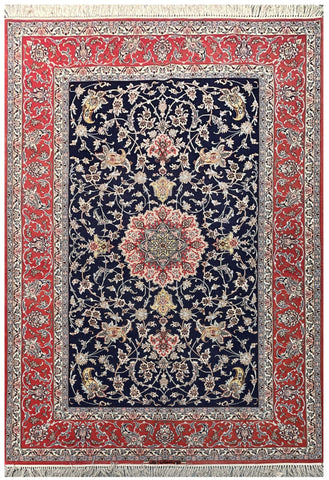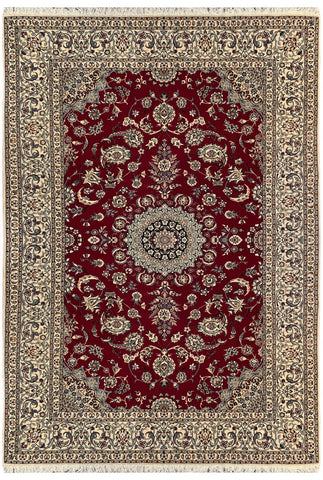20566-Nain Habibian Hand-Knotted/Handmade Persian Rug/Carpet Traditional Authentic/ Size: 8'0" x 5'3"/ 244cm x 160cm
Babak's Oriental Carpets
1 in stock
medium
NR: 20566
Location: Nain - Signed Iran Habibian
Size: 8'0" x 5'3" / 244cm x 160cm
Country: Iran
Pile: Wool
Base: Cotton
NAIN HABIBIAN
Fatollah Habibian is known as the “Father of Nain Rugs.” He was born in 1903 in the city of Nain. He knotted his first carpet as a school boy. He left...
NR: 20566
Location: Nain - Signed Iran Habibian
Size: 8'0" x 5'3" / 244cm x 160cm
Country: Iran
Pile: Wool
Base: Cotton
NAIN HABIBIAN
Fatollah Habibian is known as the “Father of Nain Rugs.” He was born in 1903 in the city of Nain. He knotted his first carpet as a school boy. He left Nain in his teenage years to become an apprentice at a carpet making workshop. He returned to Nain and opened, along with his brother Mohammad, their own workshop in 1920.
Fatollah had always shown a natural gift of carpet making. By the time of opening the shop he had already mastered the skills to create very fine rugs. Fatollah and Mohammad began making very fine rugs, often out of pure silk. His craftsmanship and artistic vision almost singlehandedly shaped the face of Nain carpets as we know them today.
Always incorporating beautiful colours and intricate designs, a Habibian Nain is always an incredible example of exemplary carpet making. Nain carpets are known for their beautiful designs and unique colour palate. The design is, in most cases, made up of an ornate medallion, surrounded by elaborate floral designs. The colours used are almost always ivories, creams, and greys, amongst blues ranging from light (commonplace) to darker hues. The pile of the carpet is usually quite short and silk is often used to highlight the designs. Nains are decorative while still being hard wearing carpets.
Fatollah continued to make carpets well into his eighties, as well as teach the craft to others. He passed the business onto his Grandson, Mamud Reza Habibian. Master Fatollah Habibian passed away in 1995.
Habibian Nains made by the Master Fatollah Habibian have become increasing harder to find as the year go by. They still produce Nain carpets under the Habibian name, the quality is still very good, but they are produced at a much slower rate.
A Habibian carpet is an exceptional example of carpet making in the 2000 century. Their impact is one of noteworthy excellence in design, quality, and craftsmanship.
NAIN
Details:
Nains are hand knotted on a vertical loom with a warp and weft of very fine cotton. The weft is often passed twice between the rows of knots thus giving this carpet durability. The pile is normally made of wool and is always very closely cropped. Silk is often used in the pile, serving to heighten the effect of some parts of the decorations thus giving it a certain gleam. Some rare examples exist which are made entirely of silk. Nains incorporate a Persian knot with very high densities ranging from 300 to 600 knots per square inch. There are varying sizes but the medium and large-size carpets are most common.
Description:
The central Persian town of Nain was renowned as a weaving centre of high quality and costly woolen cloth. When this craft fell into decline around the turn of the century, rug-weavers were imported from Isfahan, and by mid-century the town had established itself as one of the foremost carpet-weaving centers in the world.
In appearance, quality and structure, Nains are very similar to Isfahans, but they tend to contain more bird and animal motifs in their infill decorations and the majority of their designs are outlined in silk. The field is decorated with an interlaced pattern of flowering branches or what is often referred to as Shah Abbas designs. The border is traditional, as it is one of a wider central band flanked by two guards, which are sometimes framed by two narrow bands. All the bands are decorated with a floral motif, often enclosed in cartouches along the main one. The color scheme is very light with a lot of blue, beige, azure, ivory, red and white.
Master workshop items are often made in much larger sizes than standard workshop items, but they usually employ a similar range of designs and, although wool or wool and silk carpets are most common, some items are made entirely of silk. A large proportion of Nains are for the home market where they are much prized by the Arab states. As such they are often hard to find outside of the Middle East.
Price Range and Value:
MEDIUM/HIGH TO HIGH
Nains are generally comparable with Isfahans and tend to retain their value.
Articles & Videos
Wikipedia Entry (Article)
Carpet Production (Video)
Provincial Landscapes & Nature (Video)
Carpet Showcase (Video)


















